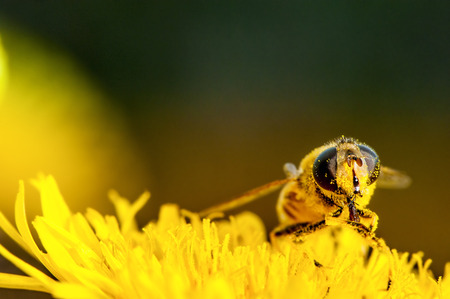Survey Says: Fewer Winter Bee Losses
June 05, 2017
Bee Colony Collapse, Honey, Honey Bees
As many well know, honeybee populations in the United States have been declining over the past 20 years. Many factors have been considered as possible causes, including pesticides, diseases, varroa mites, lack of land and resources, malnutrition, and the ever-mysterious colony collapse disorder (CCD). With so many variables working against honeybees, any positive step forward is worthy of celebration among beekeepers. As per a recent Bee Informed Partnership survey, the national average for bee colony losses this past winter has come down from 27 percent—to 21 percent. Considering how crucial bees are as pollinators for our national food supply (1/3 of all food we eat), this is no small feat.
A Veteran's Opinion
Even better, the survey stated the decade average for winter losses stands at 28.4 percent, making the accomplishments of this past winter even more astounding. It was certainly something noticed by veteran beekeeper Bret Adee, who co-runs Adee Honey Farms in South Dakota. “I wish we could take credit for better bee numbers as a management issue, but a lot of it was weather,” he said. The Adees, just like many beekeepers, take their honeybees out west for the winter season to rent their bees out to California farms, especially almond farms. Adee stated that the state of California saw double the rainfall it usually gets, which left the desert covered with wildflowers.
Farm Management
Adee continued, “Historically, we used to lose three percent [hives]. If our losses were over five percent, we thought we had a management problem, so we’re still losing six-fold higher that what was our baseline for decades.” Even with good winters like this past one, Adee and keepers like him still have much to do in terms of work, having to do for bees what they naturally once did to keep up their numbers.
In discussing honeybee decline, Adee pinpointed the ways in which farming has changed as one of the primary candidates. Farm management today involves more herbicide and leaves less forage than previous decades, with the varroa mite playing a role as well. “A bee hive used to last three years, now the average bee hive in the nation lasts six months, and if beekeepers weren’t continually raising queens and putting in new queens, the bee supply would collapse,” Adee said.
Another point Adee made involved the place of conservation acres in helping honeybee populations. Specifically, if farmers allowed more of their land to “rest,” especially those that had seen many harvests, it would not only imrove their soil health, but it would also greatly help honeybee populations further. Such techniques could potentially lead to even more positive steps forward in the future.


.jpg)




